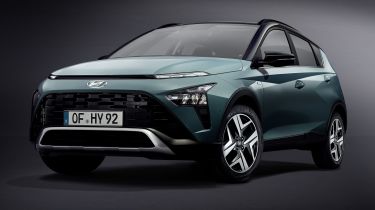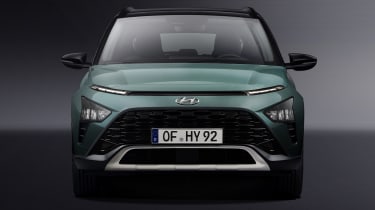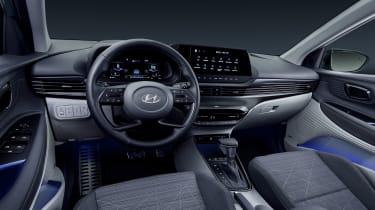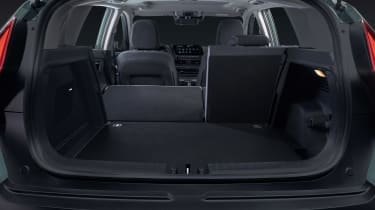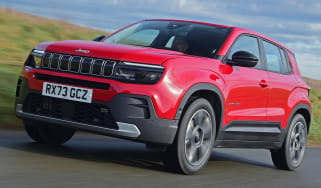New Hyundai Bayon SUV priced from £20,295
New compact Hyundai Bayon SUV available in three trim levels and goes on sale next month
- Rival to Captur and Puma
- Mild-hybrid petrol engine
- On sale from this July starting from £20,295
Full details for the new Hyundai Bayon have been released. The new crossover, which is heavily based on the latest Hyundai i20 supermini, will be available in three trim levels with a starting price of £20,295. It’s available to order now, with first customer cars arriving in July.
The Bayon slots in below the Kona in Hyundai’s range and offers eye-catching styling, the latest connectivity and a 1.0-litre mild-hybrid petrol engine with the choice of two power outputs. Hyundai is hoping it will tempt buyers away from rivals such as the Ford Puma, Renault Captur and SEAT Arona.
2021 Hyundai Bayon SUV: prices, specifications and trim levels
The SE Connect model is the entry point to the Bayon line-up, starting from £20,295. It comes with plenty of standard equipment including 16-inch alloy wheels, LED daytime running lights, electrically adjustable mirrors and roof rails. Inside, a leather-trimmed steering wheel and gear stick are standard, along with air conditioning.
Standard technology includes an eight-inch infotainment touchscreen, Apple CarPlay and Android Auto, and a 10.25-inch digital dial cluster. Cruise control is also included, along with a rear parking camera.
The Premium model starts at £22,495 and has larger 17-inch alloys, rear privacy glass, and LED headlights and tail lights. Interior upgrades include a larger 10.25-inch infotainment screen with sat nav, climate control, wireless phone charging and electric folding mirrors.
At the top of the range, the Ultimate model has gloss black door mirror caps, keyless go, a premium stereo system, and a black and grey interior. It also has more safety kit, with lane keep assist and blind spot warning. Prices for the Ultimate start at £23,795.
Design
Clearly influenced by the bold new Hyundai Tucson, the Bayon gets a wide grille at the front, flanked by low-set headlights that sit below daytime running lights. This is a popular styling trend, as it’s also found on many of the Bayon’s prospective rivals - like the Skoda Kamiq, Citroen C3 Aircross and Nissan Juke. Silver-painted bumpers, a raised ride height and black plastic trim around the wheel arches show its SUV aspirations.
At the rear, the boomerang-shaped tail-lights follow creases in the bodywork with a thin light bar that sits underneath the rear windscreen. Nine colours are available and seven of them can be specified with a contrasting black roof. Depending on spec, there are 15-inch steel wheels and alloy wheels available in 16 and 17-inch sizes.
Interior and technology
The Hyundai Bayon shares its interior with the i20, so high-spec cars will get a pair of 10.25-inch screens - one for driving info and a touchscreen for media and navigation functions. Even base-spec cars will get a touchscreen with Android Auto and wireless Apple CarPlay, although it will be smaller at eight inches.
Connectivity is a big selling point for the Bayon, thanks to Hyundai’s BlueLink smartphone app. As well as creating user profiles, seeing where you’ve parked the car and remotely unlocking it, the app can sync with your preferred calendar app - if an event has an address listed on it, it will appear in the car’s sat nav. You also get Connected Routing for more precise route guidance, and Live Parking to see how much parking fees are.
Aimed at families, the Bayon offers the latest safety technology too. It’s not yet confirmed which features will be offered as standard but some of the available driver aids include blind-spot monitoring, rear occupant alert and a system that spots when the car at the front of the queue moves away, as well as regular things like lane-keeping assist and auto emergency braking.
Practicality
It may be more compact than the Kona but the Bayon actually offers a bigger boot at 411 litres. Flipping down the rear seats frees up 1,205 litres, while the car’s high ground clearance should offer a great view of the road ahead.
Engines, performance and efficiency
Like the i20, you get a 99bhp 1.0-litre mild-hybrid petrol engine, while a 118bhp version is also available. Both come with a six-speed manual gearbox as standard, with an optional seven-speed DCT auto available for the Premium and Ultimate trim levels. Flat-out acceleration from 0-62mph takes 10.7 and 10.4 seconds for the 99 and 118bhp engines respectively, or a second longer in each case if you pick the automatic.
Economy figures are yet to be revealed but CO2 emissions start at 118g/km for the 99bhp engine with the manual gearbox and 120g/km for the DCT automatic. The 118bhp engine is only slightly less efficient, with emissions starting at 119g/km for the manual.
The manual gearbox is Hyundai’s new ‘intelligent’ transmission, with no physical link between the clutch pedal and the clutch itself. It instead uses electronic sensors and actuators, which allows the engine to switch off when you’re in gear but not pressing the accelerator. In the i20, this system worked well, feeling like a normal manual gearbox with the benefit of slightly improved fuel economy.
Read the latest on Hyundai here or check out what other cars are coming in 2021.
Recommended

Rugged Volvo EX30 Cross Country arrives with £47k price tag
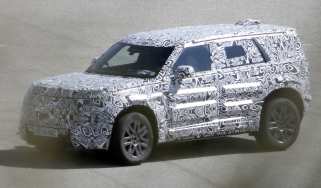
New Land Rover Defender Sport spotted and it’s an electric baby SUV
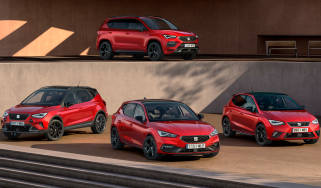
SEAT releases new Black Edition models with sportier styling
Most Popular

Omoda E5 targets rivals: now with zero deposit and APR

Ford Puma Gen-E driven: Electric charmer or too little, too late?
Tips & advice

Car dashboard warning lights: what does each symbol mean?

Electric car charging stations: public networks, charger types, apps and maps


